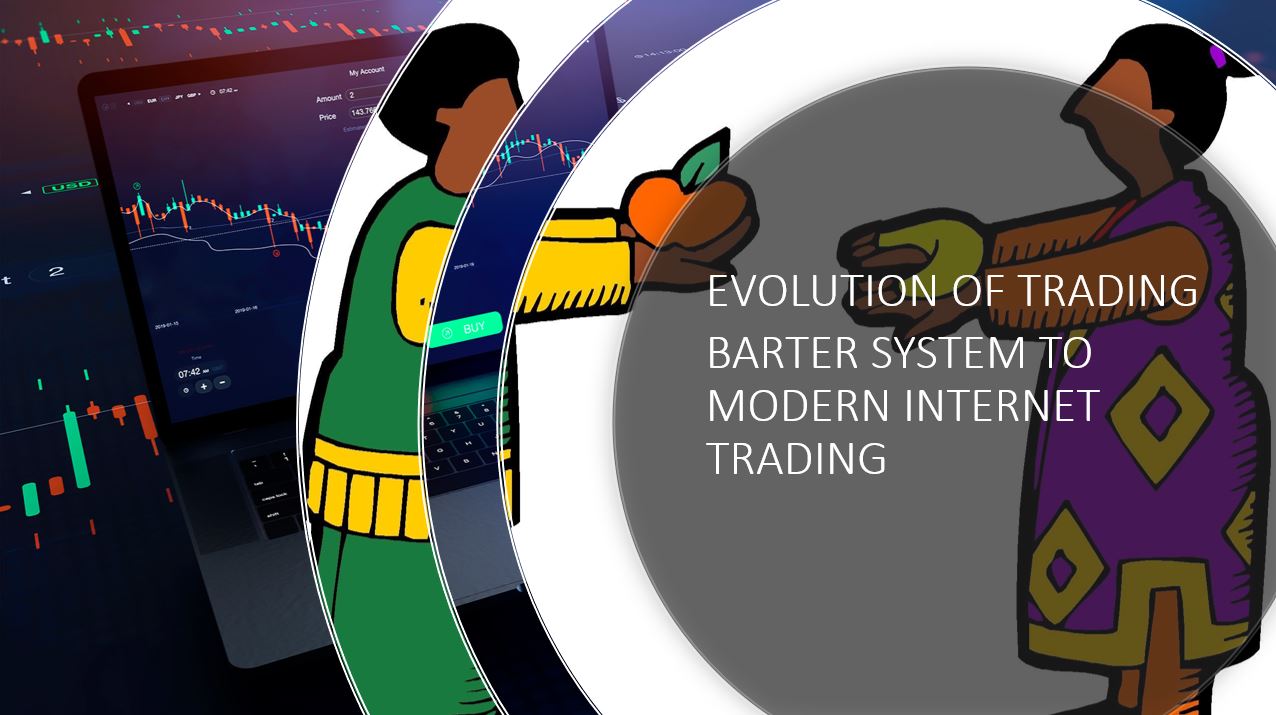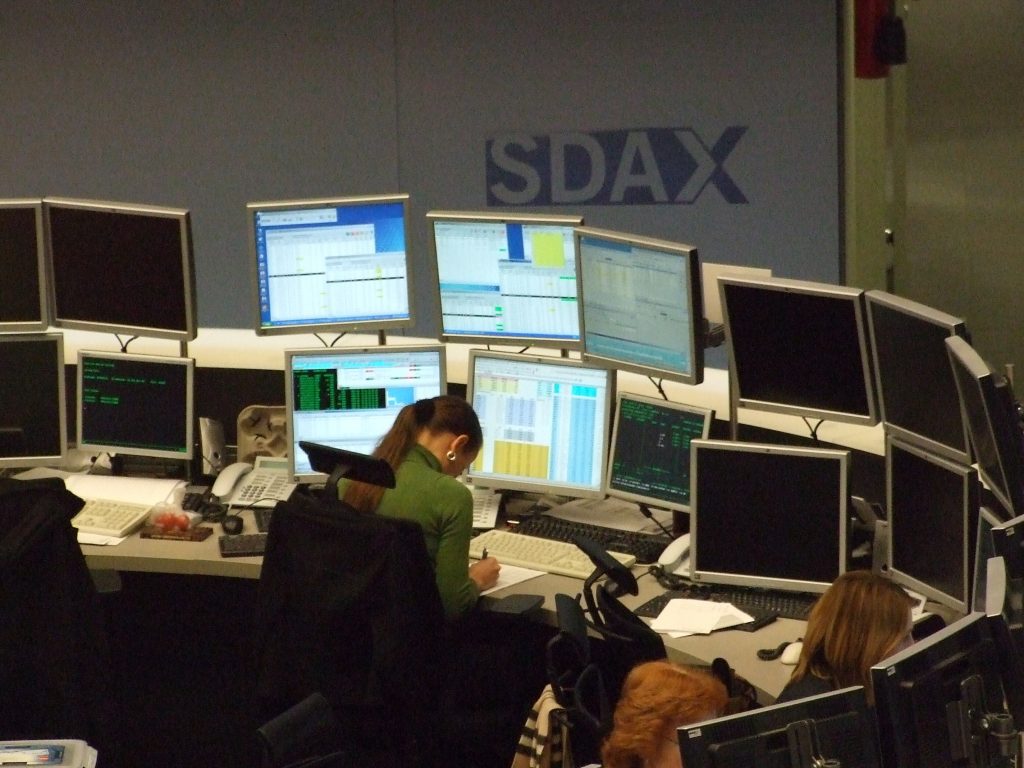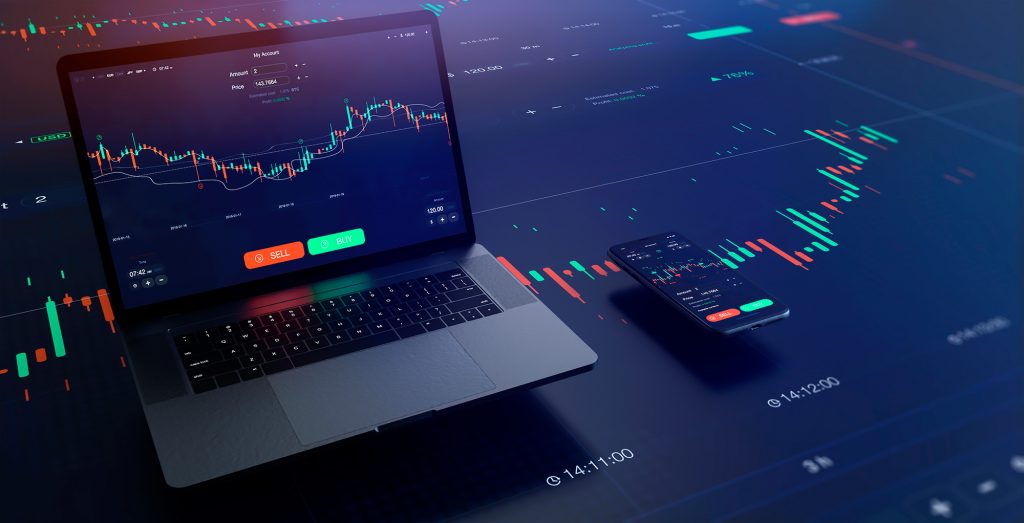Trading has evolved significantly since ancient times and has undergone several major changes in response to technological advancements and changes in the global economy.
The evolution of trading can be traced back to ancient times when people traded goods and services through bartering. Over time, trading has evolved and changed in response to technological advancements and shifts in the global economy. Here’s a more detailed look at the evolution of trading:
Bartering
Bartering is one of the oldest forms of trading, and it involves exchanging goods and services directly without the use of money. It is believed to have started in ancient civilizations such as Babylon, Egypt, Greece, and Rome, where people would trade goods and services directly with one another. In the early days of bartering, the value of each item was determined by its rarity, usefulness, or perceived value. This type of trading was limited by the difficulties of finding a trade partner with complementary goods or services. The lack of currency systems also made it difficult to trade with people in other countries.
Currency systems
The development of currency systems marked a major turning point in the evolution of trading. This allowed for more sophisticated trading and made it easier to trade with people in other countries. The early currency trading system was limited to face-to-face transactions between buyers and sellers, as well as through the use of money changers and brokers. The value of currency was determined by its rarity and perceived value, and the lack of standardized currency systems made it difficult to trade with people in other countries. Over time, standardized currency systems were developed and used to facilitate trade and commerce. With the use of a common currency, traders could exchange goods and services more easily and without the need for a direct exchange of goods. The introduction of paper money and the use of banks further evolved the currency trading system and made it more efficient and accessible to a wider range of people.
Stock markets

The first stock market was established in Amsterdam in the 1600s, and this marked the beginning of modern stock trading. Stock markets provided a platform for companies to raise capital by issuing shares and allowed traders to buy and sell those shares. The development of stock markets paved the way for the growth of modern financial markets and paved the way for the growth of new financial instruments, such as bonds and derivatives. The Amsterdam Stock Exchange, as it was known, was the first organized stock market in the world and set the stage for the development of stock markets in other countries. The Amsterdam Stock Exchange was open to all investors and was a key factor in the growth of the Dutch economy. Trading on the stock exchange was conducted through face-to-face transactions between buyers and sellers, and the price of each stock was determined by supply and demand. Over time, the stock market evolved and became more organized, leading to the introduction of new trading mechanisms and technologies, such as electronic trading and stock index futures. Today, stock markets play a critical role in the global economy and are an important source of investment and financial growth for people around the world.
Electronic trading
The introduction of electronic trading in the latter part of the 20th century transformed the way stocks were traded. With electronic trading, trades could be executed much faster and more efficiently, which allowed for the growth of new trading strategies, such as algorithmic trading. Electronic trading also made stock trading more accessible to a wider range of participants and led to the growth of new financial markets, such as the futures and options markets. The first electronic trading system was introduced in the 1970s and represented a major milestone in the evolution of trading. Prior to this, stock trading was conducted through face-to-face transactions and phone calls between brokers and traders. The first electronic trading system, known as the Automated Trading System (ATS), was developed to streamline the trading process and make it more efficient. The ATS eliminated the need for manual trading and allowed traders to place orders and execute trades electronically. This paved the way for the development of electronic stock exchanges, which would go on to revolutionize the financial world. The introduction of electronic trading transformed the stock market, making it faster, more efficient, and accessible to a wider range of traders and investors.
Internet trading
The advent of the internet made it possible for individuals to trade stocks and other financial instruments from the comfort of their own homes. This opened up the markets to a wider range of participants and led to the development of new trading platforms and services. The internet also facilitated the growth of new types of trading, such as social trading, where traders can follow the strategies of successful traders and automatically execute trades based on those strategies.
Modern internet trading refers to the buying and selling of securities using online platforms. The widespread availability of the internet and advancements in technology have transformed the way people trade and invest in the stock market. With the click of a button, traders and investors can access real-time market information, place orders, and execute trades from anywhere in the world. Online trading platforms offer a range of features, such as charting tools, news and analysis, and educational resources, making it easier for individual investors to participate in the stock market. The modern internet trading system has also enabled the growth of algorithmic trading and the use of sophisticated trading software, which has revolutionized the speed and efficiency of trading. The modern internet trading system has greatly expanded access to the stock market and has made it easier and more accessible for people to invest and grow their wealth.
In conclusion, the evolution of trading has been marked by several major shifts, including the transition from bartering to currency systems, the growth of stock markets, the introduction of electronic trading, and the growth of internet trading. Each of these shifts has transformed the way goods, services, and financial instruments are traded and has opened up new opportunities for traders and investors.







[…] is the budget important for the Indian stock market? The Indian stock market is closely tied to the state of the Indian economy, and the budget is one of the key indicators of […]